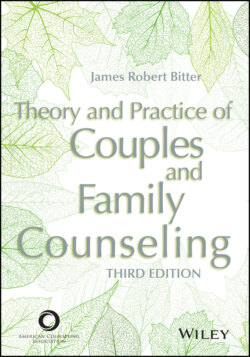Читать книгу Theory and Practice of Couples and Family Counseling - James Robert Bitter - Страница 117
Quest Family Genogram
ОглавлениеAt the time of counseling, Paul is 45, Jane is 43, and Amy and Ann are 18 and 16, respectively. The two boys, Jason and Luke, are 6 and 4. A genogram of the Quest family appears below. A genogram is a family map that indicates both the structure and emotional relationships of a family and its members. We will take a closer look at genograms in the chapter on Bowen’s multigenerational family theory. For a complete guide to genograms, see McGoldrick et al. (2020).
In all of the theory chapters that follow, you can assume that the practitioners have access to this background information on the Quest family. Each practitioner will apply the theory and interventions of the model as they would be adapted to the Quest family. You may find it useful from time to time to refer back to the family data and genogram as you note how each theory addresses various aspects of the case.
I realize that a lot of information is contained in the story of the Quest family. This amount of information is uncommon in therapeutic practice. It constitutes the raw data that will be the foundation for the qualitative analysis and action research that will inform future therapeutic practice in the field of family counseling. How each model chooses to sort through the data, identify significant themes, and decide on therapeutic interventions says something about both the model and its practitioners. As you sort through the information contained in the story of the Quest family, what themes stand out to you? How do you prioritize the themes you identify? How would you verify that the themes you have identified as significant are also important to the family? In what ways does identifying themes, sequences, and processes inform your understanding of the family? Are you aware that just answering these questions engages you in qualitative research (Dahl & Boss, 2005; Echevarria-Doan & Tubbs, 2005)? When your understanding is translated into interventions and you assess the effectiveness of those interventions, you are also engaged in action research (Mendenhall & Doherty, 2005). Like all areas of the helping professions, evidence-based practice is essential to the future development of family counseling.
